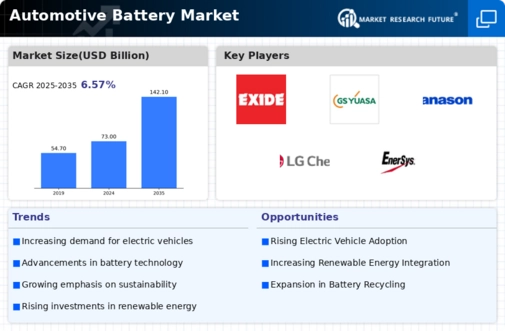Automotive Battery Market Summary
As per Market Research Future Analysis, the Automotive Battery Market was valued at USD 66.2 Billion in 2022 and is projected to grow from USD 70.549 Billion in 2023 to USD 103.348 Billion by 2030, with a CAGR of 6.57% during the forecast period. The growth is driven by the increasing demand for zero-emission hybrid and electric vehicles, falling battery prices, and government incentives promoting electric vehicle adoption. The market is characterized by a significant shift towards lithium-ion batteries, which are expected to grow at the fastest rate due to their high energy density and efficiency compared to traditional battery technologies.
Key Market Trends & Highlights
Key trends driving the automotive battery market include advancements in battery technology and increasing government support for electric vehicles.
- Lithium-ion battery segment projected to grow fastest during the forecast period.
- Electric propulsion segment expected to witness a growth rate of 28%.
- North America to dominate the market due to eco-friendly product development initiatives.
- Governments offering tax credits up to USD 7,500 for electric vehicle purchases.
Market Size & Forecast
| 2022 Market Size | USD 66.2 Billion |
| 2023 Market Size | USD 70.549 Billion |
| 2030 Market Size | USD 103.348 Billion |
| CAGR | 6.57% |
Major Players
Key players include Exide, GS Yuasa, Panasonic, LG Chem, A123 Systems, East Penn Manufacturing Company, Robert Bosch Gm BH, and EnerSys.

















Leave a Comment